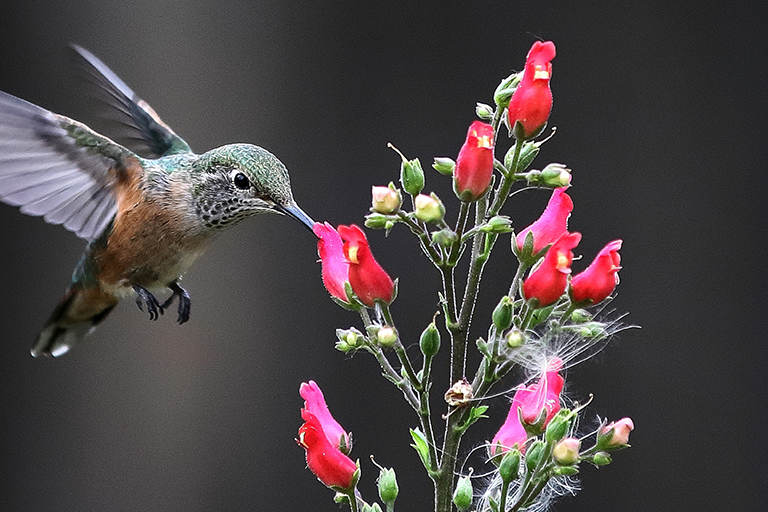By Dennis Smith
I was watching my dry fly bob down the current of a small nameless creek near the Continental Divide, just below Cameron Pass, when I heard a high-pitched trilling sound and saw something tiny zip past my head in a blur of metallic green before disappearing into a thicket of bankside alders. “What in the world was that?” I wondered. A giant bee? A huge beetle? I had no idea.
I was new to Colorado, having just moved here from New York’s southern Catskills, and found myself intrigued by the region’s wildlife. I was familiar with mule deer and elk, of course, but many of Colorado woodland creatures were new to me: coyotes, magpies, Abert’s squirrels, Steller’s jays, Clark’s nutcrackers. A few minutes later the thing buzzed me again, only this time it hovered right in front me not a foot away. It was a hummingbird and it seemed to be examining my hat. It buzzed off and came back in a flash, again to hover just inches from my face. About that time, I realized it was studying the bright red logo patch on my hat.
That was 42 years ago, and what I knew about hummingbirds you could put in a thimble and it would roll around like a BB in a boxcar. Where I came from back East we had ruby-throated hummers but I seldom saw any. I hadn’t really associated hummingbirds with Colorado though I since learned that 11 different species have been recorded in the state and some of them can be thicker than fleas on a boar ’coon in the right habitat. Black-chinned, broad-tailed and rufous hummingbirds are listed as local breeders and quite common in Colorado. The same guidebook describes Calliope hummingbirds as “Colorado natives and seasonal migrants.” Seven other species are shown as occasional, vagrant or accidental migrants and rarely seen.
I knew they had to burn a lot of energy beating those tiny wings so fast (up to 70 beats per second) but still found it astounding that they have the fastest metabolism of any animal on earth — roughly 100 times that of an elephant — and may consume up to eight times their body weight in food daily. Their heart rate of 1,200 beats per minute staggers the imagination.
For the past several years we’ve had two pairs hanging out around our garden from late June through September. I think they’re broad-tails but they look so much like Calliopes that I’m not certain. Given that hummingbirds have a life expectancy of 3 to 6 years in the wild, it wouldn’t surprise me if these were the same birds (or their offspring) returning each year. They seem less and less shy each season, and last summer my granddaughter was able to hand feed them a few times. They have no fear of me and my camera anymore and sometimes act like they actually enjoy the human attention.
Dennis Smith is a freelance outdoors writer and photographer whose work appears nationally. He lives in Loveland.

